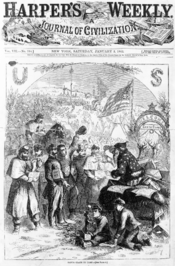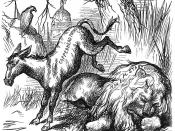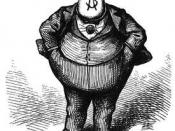Party Animals
We are all familiar with the Democratic donkey and the Republican elephant. Most of us have seen the pachyderm and the beast of burden in countless political cartoons, but how did they come to be the official "mascot" for the two parties?
"Righty" the elephant, as he is known today, was first conceived in the mind of political cartoonist Thomas Nast in 1874. He is also credited for popularizing the donkey, now known as "Lefty", however the donkey was not one of his creations.
The donkey first appeared when Andrew Jackson ran for president in 1828.
His opposition labeled him a "jackass" for his populist views and his slogan "Let the people rule". Jackson however was amused by their remarks and used the taunts to his own benefit, by displaying the animal on his campaign adds and posters. While he was president his rivals used the donkey once more to illustrate Jackson's stubbornness when he vetoed the re-chartering of the national bank.
Still the donkey just represented Jackson but not the whole party.
The donkey first represented the Democratic Party as a whole in 1837, and was again tied to non other than "Old Hickory" himself. Although well into retirement Jackson still thought of himself as the prominent leader of the Democratic Party, and was depicted trying to lead a donkey in his direction, in the political cartoon, "A Baalim and his Ass".
Nast, the elephant's creator, published his first donkey cartoon, entitled "copperhead press" in the Harper's Weekly, in 1870. He showed the donkey kicking a dead lion, to depict the press reporting of Lincoln's then-recently deceased secretary of war Edwin M. Stanton. The donkey represented the anti-war faction with whom he disagreed, but the symbol captured the fancy of the public and by 1880, it had...


